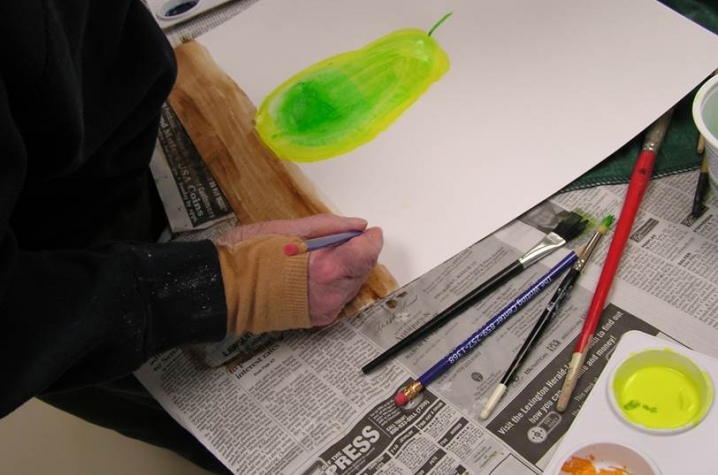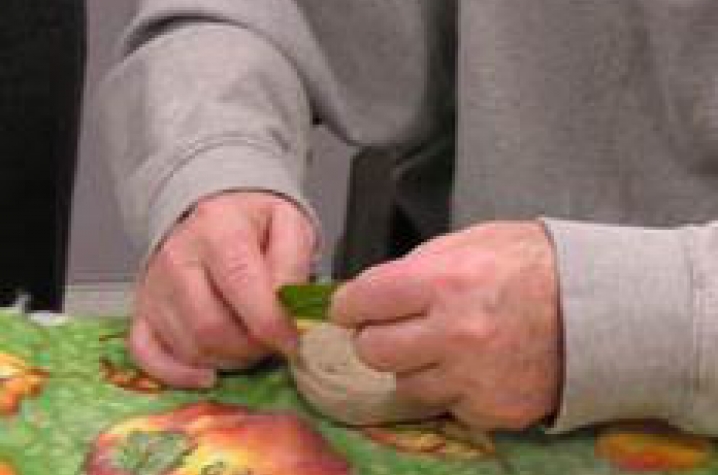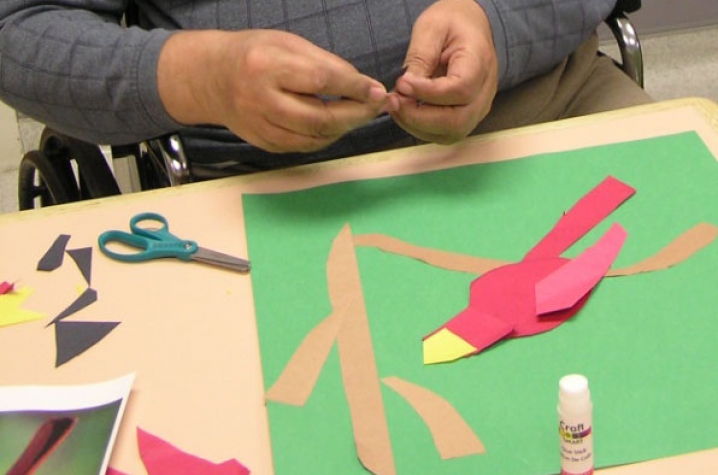Research Will Explore Effect of Visual Arts Activities on People with Dementia
LEXINGTON, Ky. (Dec. 3, 2015) — The U.S. Alzheimer's Disease Centers has awarded Allan Richards and Ann Christianson of the University of Kentucky School of Art and Visual Studies a grant to study the effects of visual arts activities on quality of life for people with mild to moderate dementia and their caregivers.
The grant will allow Christianson and Richards to implement an eight-week program where groups of 12 (six individuals with dementia and their partner caregivers) will participate in different types of visual arts activities, such as painting, sculpture, or watching slideshow movies.
According to Richards, visual arts education focuses on the processes of learning in the visual arts. "As individuals work hands-on with different media — such as paint, paper, or clay — multiple aspects of learning take place and multiple domains related to learning are engaged, including focus and concentration, problem-solving skills, tolerance to ambiguity, image and concept formation, imagination, and visual-spatial thinking, just to name a few," Richards said. "On top of that, feelings and emotional sensitivities are involved in producing a work of art, as well as important motor skills like hand-eye coordination.
"Our study is focused on providing mentally stimulating and enriching activities in the visual arts for the elderly with dementia in order to engage cognitive processes, emotions, and motor skills, perhaps slowing cognitive decline and improving quality of life," Richards said.
The study will take place once per week on a Friday, Saturday or Sunday at the newly renovated Art and Visual Studies Building at 236 Bolivar Street beginning in mid-February 2016. Each session will last for about an hour and a half. All art supplies are free to study participants and free handicapped accessible parking is available adjacent to the building.
"Research suggests that participation in visual arts activities may provide a higher form of intellectual and sensory stimulation for individuals with dementia than is normally available with regular recreational activities," Christianson said. "Our goal is to document a tangible connection between participation in visual arts activities and improved quality of life for both the patient and their caregiver."
Research assessment will take the form of two short surveys that look at different dimensions of quality of life, administered once at the beginning of the study and twice afterwards (one immediately afterwards and the other a few months post). The caregivers will also self-report on their quality of life and on some of their observations about the current functional abilities of the person with dementia.
Richards and Christianson are currently recruiting study participants. If you are an individual with dementia, you may be able to participate if you currently are living at home, have intact vision/hearing and have mild to moderate dementia.
If you are a caregiver, you may be able to participate if you are a caregiver for the participant with dementia and have 10 or more hours of contact per week with them snd are available to accompany the individual with dementia to the visual arts activities and assist them when necessary.
For more information about the study or to see whether you are eligible, call Richards at (859) 361-1483 or Christianson at (859) 312-4553.
"Our feedback indicates that this study is a first of its kind from the field of Visual Arts Education, and we're thrilled for the opportunity to explore the role of the visual arts in enriching the lives of people with dementia," Christianson said.







